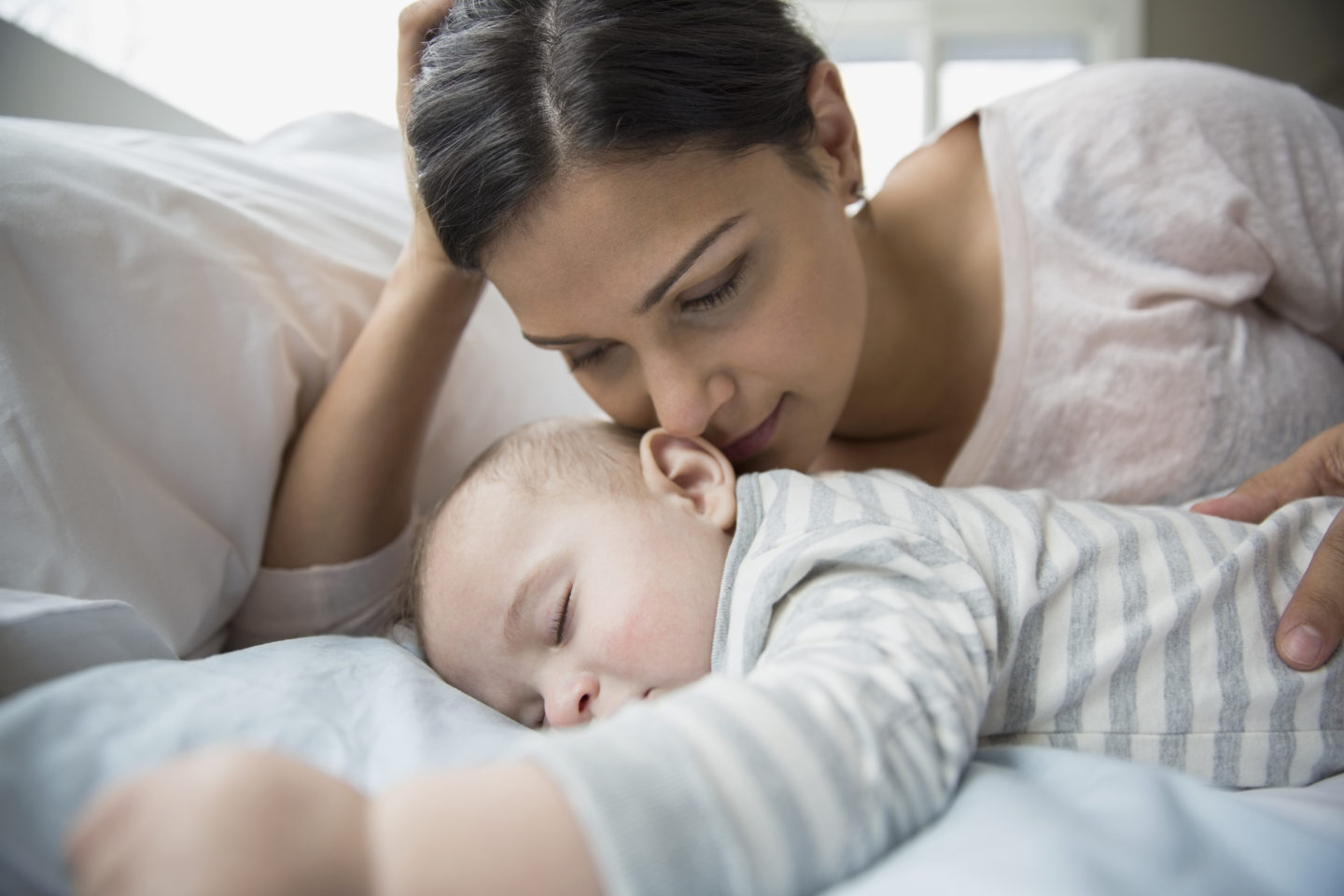About 11-20% of new mothers in the US experience postpartum depression; 10% suffer from postpartum anxiety.
New motherhood is often cited as a stressful, if magical, time in which the mother begins to form long-lasting bonds with her new baby. However, for mothers suffering from postpartum depression and anxiety, achieving that post-childbirth bliss is incredibly difficult.
Postpartum depression and anxiety can be triggered by a variety of issues (see a full list below), but often has to do with the rapid drop in hormones a mother experiences after giving birth. Drastic hormonal shifts like this often result in severe mood swings — one of the symptoms of postpartum depression (PPD). Lack of sleep also contributes to postpartum mood disorders. The physically and mentally exhausting experience of caring for a newborn baby, particularly in an unstable or unsupportive environment, can exacerbate symptoms of PPD.
Symptoms of Postpartum Depression and Anxiety
PPD makes it more difficult for mothers to establish a connection with her baby, oftentimes leading to a cycle of even more shame and guilt. While some may mix up the symptoms for PPD with those of “baby blues,” there are some notable differences. Both are mood affecting and bring on feelings of sadness, irritability and other symptoms of depression, but unlike PPD, “baby blues” only last up to two weeks after child birth. It is important not to trivialize depressive feelings or physical symptoms of depression after childbirth, as what might be brushed off as simply baby blues, could be the start of postpartum depression.
Those suffering from PPD may also experience severe anxiety and fear, more severe than the expected new-mom butterflies. Postpartum anxiety incites feelings of constant worry and fear, changes in sleep and appetite (much like depression), and panic attacks. These come with physical symptoms as well, such as an “inability to sit still” and “dizziness, hot flashes, and nausea.”
Warning Signs of Postpartum Depression and Anxiety
If depressive symptoms have been present for longer than two weeks after childbirth, this is a sign the a new mother is suffering from more than just “baby blues.” If depressive symptoms begin to hit after the first two weeks of childbirth, this is also a sign of PPD beginning to develop. It’s important to also note that while exhaustion, fatigue and losing interesting in things that were once pleasurable, may be normal side effects of having a newborn baby at home, they can also be red flags for PPD. If symptoms begin to get in the way of taking care of yourself or your baby, they should be addressed with a doctor.
A drastic change in appetite and inability to sleep can also indicate impending PPD and anxiety. In an interview with US News, mother Allison McGill said that two months after giving birth, she began experiencing severe anxiety regarding her son’s well-being at all hours. She was rarely sleeping, as well as eating less. When McGill sought treatment one month later, her mental health professional recognized these symptoms as PPD and anxiety, and also pointed to McGill’s past struggles with anxiety as an indicator of her likelihood to be affected by the condition postpartum.
Those who fit the below risk factors for PPD and anxiety may want to discuss a treatment plan with their doctor during the pregnancy, so they can be prepared in case a postpartum mood disorder does hit.
Risk Factors for Postpartum Depression and Anxiety
Many women who suffer from postpartum depression and/or anxiety also have personal or familial history of the conditions. About one-third of women suffering from postpartum depression have dealt with depression prior to becoming pregnant, and another one-third also suffered from depression throughout their pregnancy.
One of the biggest indicators of a mother suffering from postpartum mood disorder is if she has had an episode during a previous pregnancy. Outside stressors, such as being in an abusive relationship, financial instability, experiencing a recent traumatic event, lack of emotional support, and substance abuse issues are also significant risk factors for postpartum depression and anxiety. Having an unplanned pregnancy, or a pregnancy the mother is unsure of following through with, increases the chance of PPD and anxiety as well. Access to reproductive healthcare and family planning services is vital to decreasing the number of PPD cases associated with unwanted or unplanned pregnancies.
Other risks include thyroid imbalance, and complications throughout pregnancy or childbirth.
When to Seek Help
According to Postpartum Progress, only 15% of new mothers suffering from PPD receive treatment. If symptoms haven’t decreased in several weeks, are making everyday life and taking care of a baby difficult, are triggering thoughts of suicide or harm, it is imperative to seek help.
The effects of untreated postpartum depression and anxiety are not just damaging to the mother’s life, but can be potentially harmful to the new baby as well. It is never the mother’s fault for experiencing postpartum mental illness, but it is vital that she receive professional help. If you or someone you know needs treatment, check out the resources below.
Postpartum Depression Treatment Programs & Specialists
Anxiety and Depression Association of America




comments